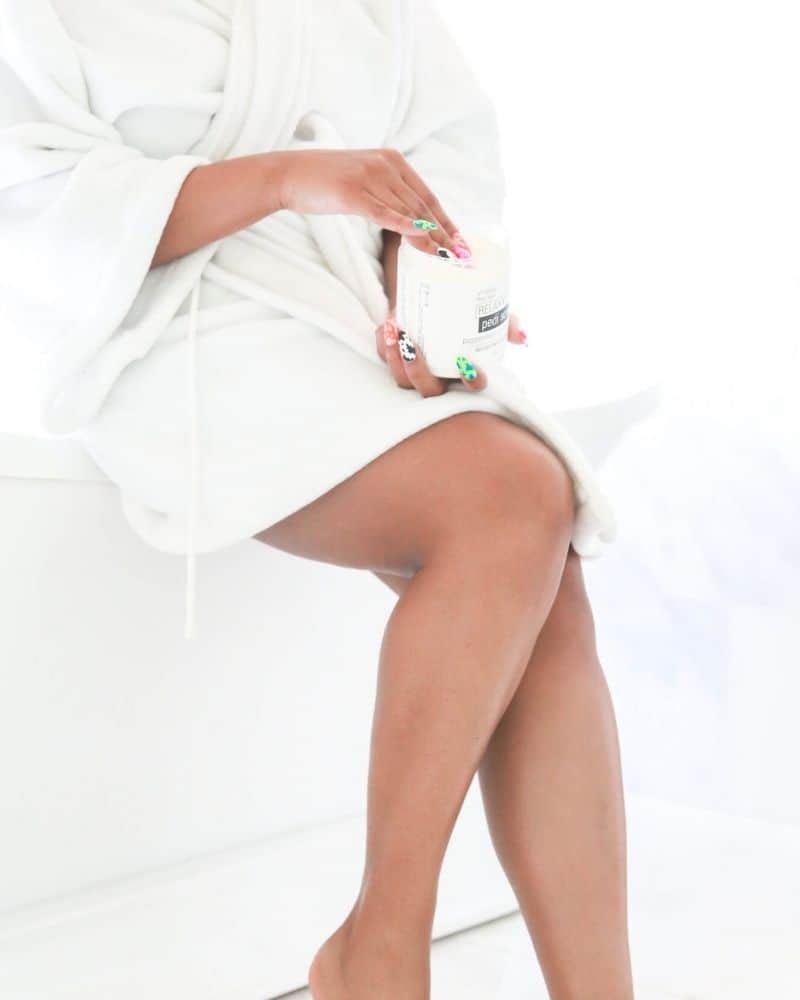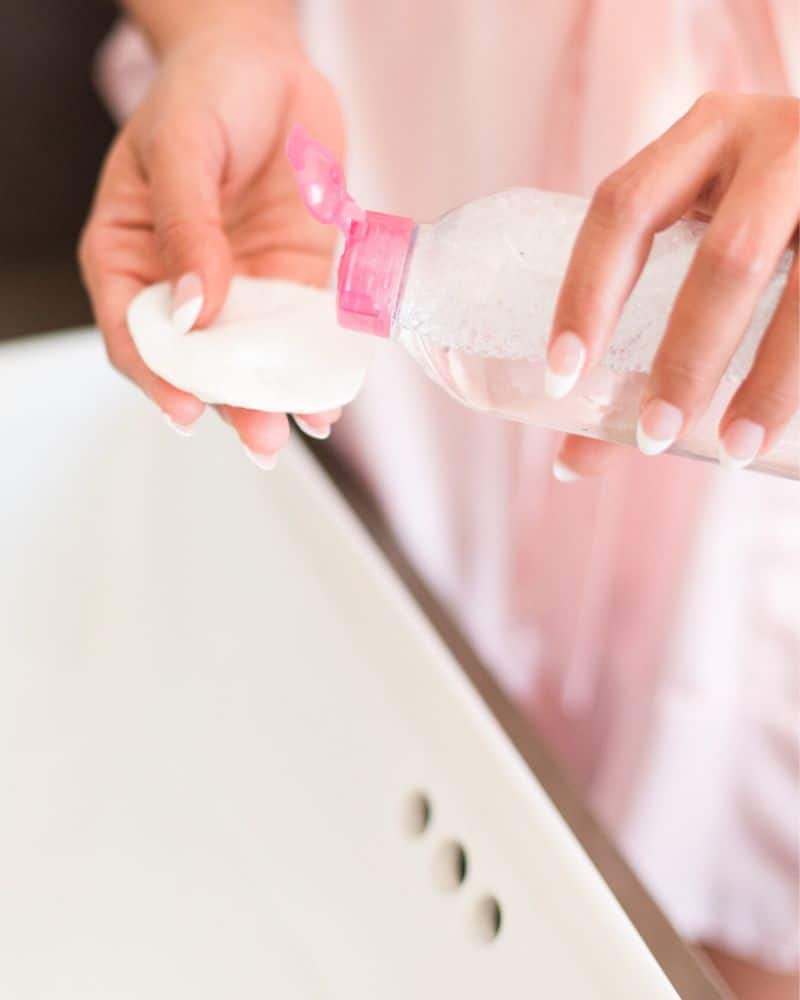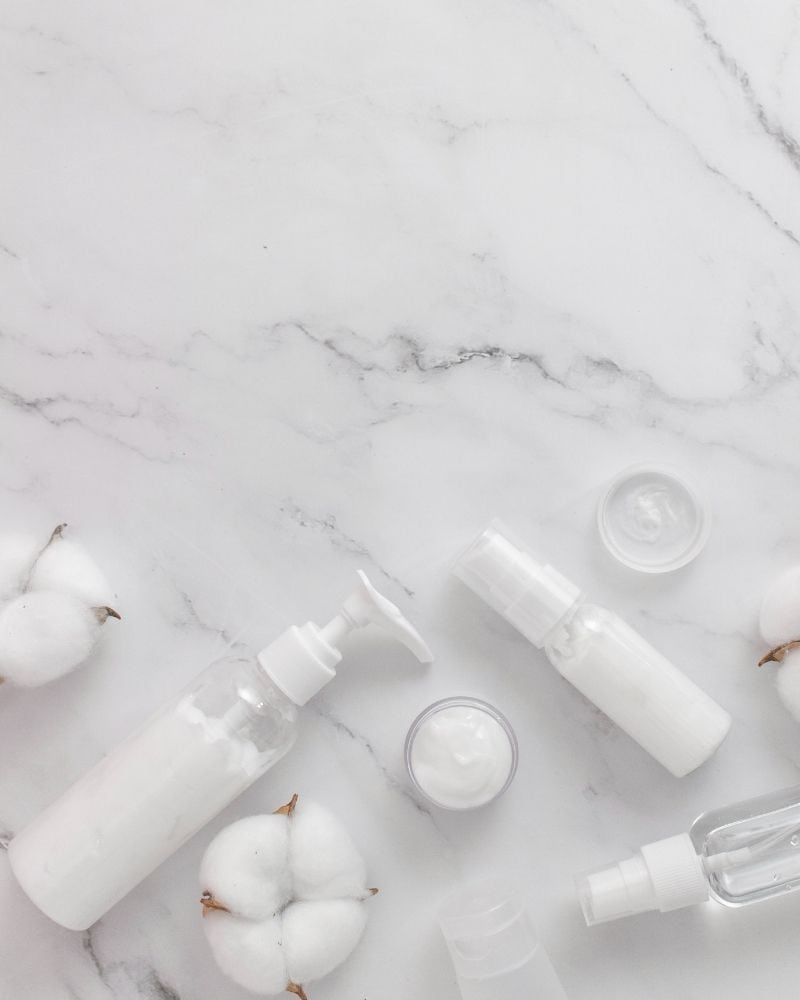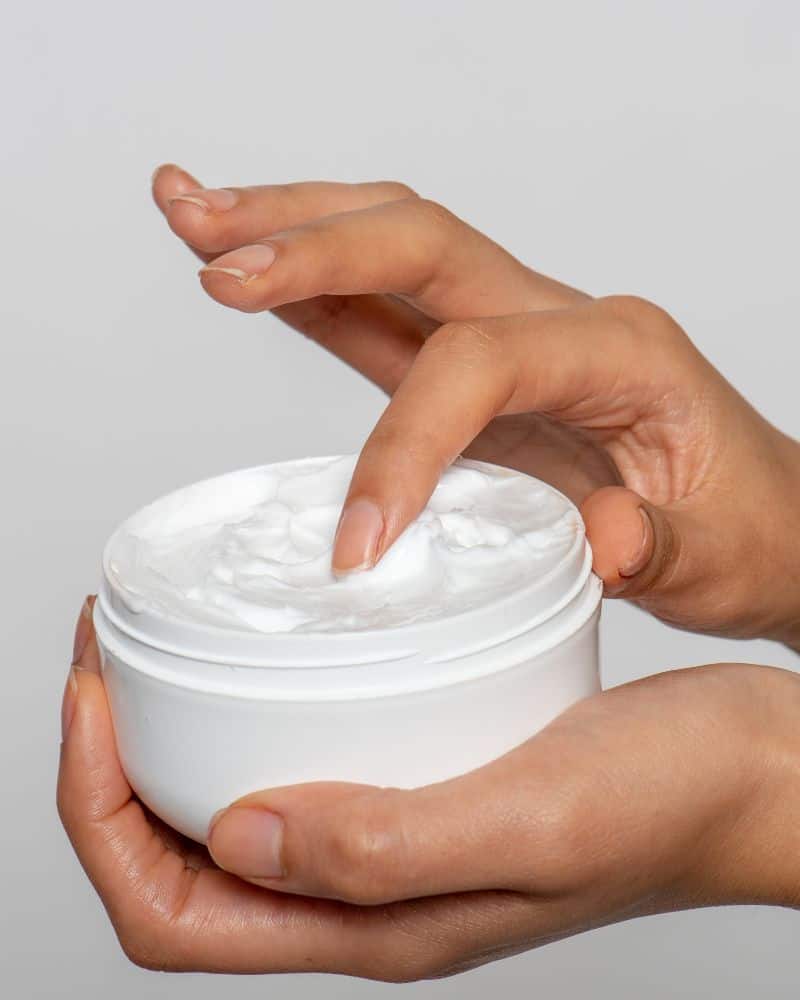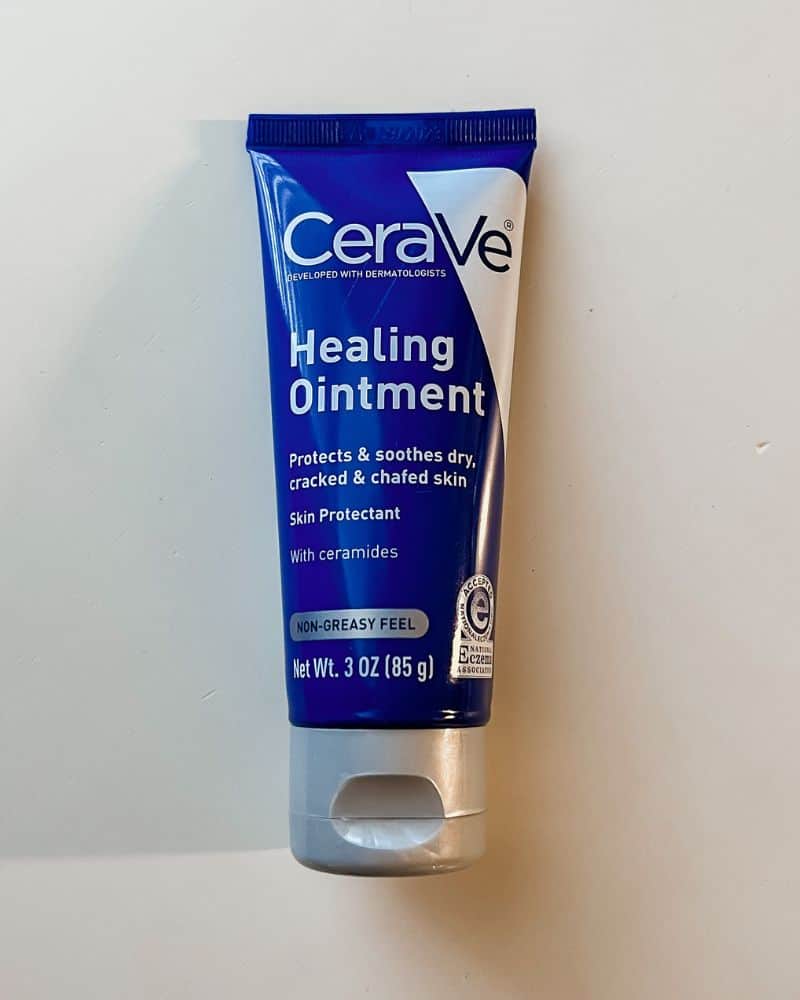How Long Should You Wait to Apply Moisturizer After Tretinoin? Expert Recommendations
This post may contain affiliate links.
This Article At A Glance

When using tretinoin, it is common to wonder how long to wait before applying moisturizer. Tretinoin is a topical prescription medication used to treat acne, fine wrinkles, and other skin conditions. It works by increasing cell turnover and promoting the growth of new skin cells. However, it can also cause skin dryness, peeling, and irritation. That is why many people wonder how long they should wait to apply moisturizer after applying tretinoin.
According to dermatologists, the general rule of thumb is to wait at least 20 to 30 minutes after applying tretinoin before applying moisturizer. This allows the medication to fully absorb into the skin and start working before applying anything else on top. Applying moisturizer too soon after tretinoin can dilute the medication and reduce its effectiveness. Additionally, it can also cause further irritation and dryness. However, waiting too long can also be detrimental as it can cause excessive dryness and flaking.
What is Tretinoin?
Tretinoin is a type of retinoid, a derivative of vitamin A, which is used in the treatment of acne and photoaging. It works by increasing the turnover of skin cells, unclogging pores, and reducing inflammation. Tretinoin is available in various forms, including creams, gels, and solutions, and is applied topically to the affected areas.
Retinoids, including tretinoin, are known to be effective in the treatment of acne and photoaging. They work by binding to retinoid receptors in the skin cells, which stimulates the production of collagen and elastin, two important proteins that keep the skin firm and elastic. Retinoids also help to reduce the appearance of fine lines and wrinkles, and to even out skin tone.
Tretinoin is different from over-the-counter retinol products, which are less potent and take longer to produce visible results. Retinol is a form of vitamin A that is converted into retinoic acid in the skin, but the conversion process is slow and inefficient. Tretinoin, on the other hand, is already in the active form, so it works faster and more effectively.
It is important to note that tretinoin can cause skin irritation and dryness, especially during the first few weeks of treatment. Patients may experience redness, peeling, and flaking, but these side effects usually subside over time as the skin becomes accustomed to the medication. Patients should also avoid using abrasive or exfoliating products while using tretinoin, as this may further irritate the skin.
In summary, tretinoin is a type of retinoid that is used to treat acne and photoaging by increasing the turnover of skin cells, unclogging pores, and reducing inflammation. It is more potent than over-the-counter retinol products and can cause skin irritation and dryness. However, with proper use and patience, tretinoin can effectively improve the appearance of the skin.
Should You Use A Moisturizer With Tretinoin or Retinol?
Yes, you absolutely need to use a moisturizer with tretinoin/retinol! Whether you use it before or after, it’s a must in any skincare routine. Tretinoin can be drying and irritating, so if you’re not using a moisturizer, you risk overexfoliating, dryness, skin irritation and even damaging your skin’s moisture barrier.
Why You Need To Use A Moisturizer With Tretinoin

Using a moisturizer while using tretinoin or retinol is essential to maintain the health and balance of your skin. Tretinoin and retinol are powerful ingredients commonly used in skincare products to address various concerns like acne, wrinkles, and hyperpigmentation. However, these ingredients can be quite drying and irritating to the skin, especially during the initial stages of use.
Moisturizers play a crucial role in counteracting the potential side effects of tretinoin or retinol. These ingredients can disrupt the skin’s moisture barrier, leading to dryness, flakiness, and sensitivity.
By applying a moisturizer, you can replenish and lock in moisture, preventing excessive dryness and soothing any irritation. A well-formulated moisturizer acts as a protective barrier, nourishing the skin and promoting its natural healing process.
It helps maintain a healthy and comfortable complexion while maximizing the benefits of tretinoin or retinol. Remember, a moisturizer is not a substitute for these active ingredients but a necessary companion for a well-rounded skincare routine when using them.
How To Use Tretinoin or Retinol With Moisturizer
Application Process
Tretinoin and retinol are easy to incorporate into your skincare routine. Here are the steps on how to use tretinoin or retinol in your routine:
- Use a gentle, sulfate-free cleanser to cleanse skin and pat dry
- Wait 15-30 minutes for your skin to dry (do not apply any other products)
- Apply a pea sized amount of tretinoin or retinol to your fingertip
- Tap the pea of product all over your face
- Gently rub in to distribute the product evenly
- Wait 15-30 minutes for it to fully absorb
- Follow with a moisturizer of your choice
How Long Should You Wait to Apply Moisturizer After Tretinoin?
After applying tretinoin cream or gel it is recommended to wait at least 20-30 minutes before applying moisturizer. This will give the medication enough time to be absorbed into the skin and will help to prevent dilution of the medication by the moisturizer. Waiting too long to apply moisturizer can lead to dryness and irritation, so it is important to find a balance that works for each individual’s skin.
Can You Apply Moisturizer Before Tretinoin?
While it is generally recommended to apply moisturizer after tretinoin to get the best results, some individuals may find that applying moisturizer before tretinoin helps to reduce dryness and irritation.
Using moisturizer before tretinoin or retinol is also known as the buffer method. By using moisturizer first, you’re essentially diluting the tretinoin, so it’s less irritating. I highly recommend doing this if you have sensitive skin or are new to tretinoin or retinol products.
However, it is important to wait at least 5-10 minutes after applying moisturizer before applying tretinoin to ensure that the moisturizer has been absorbed properly.
How to Choose the Right Moisturizer for Tretinoin?

When using tretinoin, it is important to choose the right moisturizer to avoid skin irritation and dryness. Here are some tips to help you choose the best moisturizer for your skin:
Look for Fragrance-Free Moisturizers
Fragrances can irritate the skin, especially when combined with tretinoin. Therefore, it is recommended to use fragrance-free moisturizers to minimize the risk of irritation.
Choose a Moisturizer Suitable for Sensitive Skin
Tretinoin can make the skin more sensitive, so it is important to choose a moisturizer that is gentle on the skin. Look for products that are labeled “for sensitive skin” or “hypoallergenic” to avoid any adverse reactions.
Opt for a Hydrating Moisturizer
Tretinoin can cause dryness and flakiness, so it is important to choose a moisturizer that is hydrating. Look for moisturizers that contain ingredients like hyaluronic acid, glycerin, or ceramides, which can help to lock in moisture and keep the skin hydrated.
Avoid Moisturizers with Alcohol
Alcohol can be drying and irritating to the skin, so it is best to avoid moisturizers that contain alcohol. Look for products that are labeled “alcohol-free” to avoid any potential irritation.
Check the Ingredients List
When choosing a moisturizer, it is important to check the ingredients list to ensure that it is compatible with tretinoin. Avoid using moisturizers that contain retinoids or retinol, as they can increase the risk of skin irritation when combined with tretinoin. You should also avoid any moisturizers that contain any other active ingredients like vitamin c, glycolic acid, salicylic acid, etc.
How to Incorporate Tretinoin into Your Skincare Routine?

When it comes to incorporating tretinoin into your skincare routine, it’s important to follow a few guidelines to ensure that you get the best results without causing any harm to your skin. Here are some sub-sections to help you get started:
When to Apply Tretinoin
According to dermatologists, it’s best to apply tretinoin cream at night before going to bed. This is because tretinoin can make your skin more sensitive to sunlight, which can increase your risk of sunburn and other types of skin damage.
Sunlight can also degrade tretinoin, which means if you apply tretinoin in the morning and then go outside, you render it ineffective.
How Often Should You Use Tretinoin?
It’s important to start with a low concentration of tretinoin and gradually increase the frequency of use as your skin becomes more tolerant. Most dermatologists recommend using tretinoin every other night at first and then gradually increasing to nightly use as tolerated. It’s also important to follow the instructions on the patient information leaflet that comes with your prescription product and to talk to your healthcare professional if you have any questions or concerns.
Can You Use Tretinoin with Other Acne Treatments?
Tretinoin can be used in combination with other acne treatments, such as benzoyl peroxide and salicylic acid, but it’s important to use them at different times of the day to avoid irritation. For example, you can use benzoyl peroxide or salicylic acid in the morning and tretinoin at night.
How to Deal with Flaking and Rough Skin?
Tretinoin can cause flaking and rough skin during the adjustment period. To minimize these side effects, it’s important to use a gentle cleanser and moisturizer and to avoid using other exfoliating ingredients, such as lactic acid or glycolic acid. You can also try the sandwich method, which involves applying moisturizer before and after tretinoin to help reduce dryness and irritation.
How to Protect Your Skin from Sun Exposure?
As mentioned earlier, tretinoin can make your skin more sensitive to sunlight, so it’s important to wear sunscreen with an SPF of 30 or higher every day, even if you’re not planning to spend a lot of time outside. You should also wear protective clothing, such as a hat and sunglasses, and avoid spending time in the sun during peak hours.
Frequently Asked Questions
Can I apply moisturizer after using tretinoin?
Yes, it is recommended to apply moisturizer after using tretinoin. Tretinoin can cause dryness, flakiness, and irritation, and moisturizer can help alleviate these side effects. Even if you apply moisturizer before tretinoin, you can still apply more afterwards (also known as the sandwich method).
How long should I wait to apply moisturizer after tretinoin?
It is recommended to wait at least 20-30 minutes after applying tretinoin before applying moisturizer. This allows the tretinoin to fully absorb into the skin and reduces the risk of diluting its effectiveness.
What is the best moisturizer to use after tretinoin?
The best moisturizer to use after tretinoin is a gentle, non-irritating moisturizer that does not contain any ingredients that can interact negatively with tretinoin. Look for moisturizers that are labeled as non-comedogenic, fragrance-free, and hypoallergenic.
I personally love CeraVe Moisturizing Cream and VaniCream Daily Facial Moisturizer
How long do you have to leave tretinoin on before moisturizer?
Can I apply Moisturizer straight after tretinoin?
It’s best to wait for a short period of time after applying tretinoin before applying moisturizer. This allows the tretinoin to properly absorb into the skin and reduce the risk of diluting its effectiveness. However, if you’re in a rush, you can always apply your moisturizer immediately after applying tretinoin or retinol. Although it’s not ideal, the tretinoin will still be effective (just not as effective).
Waiting for about 20 to 30 minutes after applying tretinoin allows it to penetrate the skin and work its magic before being diluted with moisturizer.
How long after applying retinol can I apply moisturizer?
The same rules for tretinoin also apply to using retinol, so it’s best to wait about 20-30 minutes before applying moisturizer on top of retinol. This waiting period allows the retinol to be fully absorbed into the skin and ensures its effectiveness.
20 to 30 minutes gives the retinol enough time to penetrate the skin and work its magic.
Can I put moisturizer over retinol?
Yes, you can apply moisturizer over retinol. Retinol, like tretinoin, can potentially cause dryness, redness, and irritation in the initial stages of use. Applying a moisturizer on top of retinol helps to hydrate and nourish the skin, reducing the likelihood of these side effects.
Can I mix tretinoin with moisturizer?
Yes! I suggest mixing tretinoin with moisturizer as a way to minimize potential irritation and dryness. This can be especially helpful for individuals with sensitive skin or those who experience excessive dryness or irritation from using tretinoin alone.
To mix tretinoin with moisturizer, you can follow these steps:
- Start with a small amount of moisturizer in your palm or on the back of your hand.
- Add a pea-sized amount of tretinoin to the moisturizer. Adjust the ratio as needed, depending on your skin’s tolerance and the strength of the tretinoin product.
- Gently mix the moisturizer and tretinoin together until they are well blended.
- Apply the mixture to your face, avoiding the sensitive areas around the eyes, nostrils, and lips.
By combining tretinoin with moisturizer, you can potentially minimize the intensity of the retinoid and make it more tolerable for your skin. This mixture helps dilute the concentration of tretinoin, reducing the risk of irritation and dryness. However, keep in mind that this approach may also reduce the effectiveness of tretinoin to some extent.
How long should I leave tretinoin on my face?
While tretinoin is meant to be left on the skin, some may benefit from using the short-contact method, especially when first starting out using tretinoin. The short contact method helps to reduce irritation and dryness by lessening the time tretinoin is left on the skin. To do this, apply a thin layer of tretinoin to the face and rinse off after 5-10 minutes instead of leaving it on overnight. This may be done 1-2 times per week; as your skin adjusts you can increase how long you leave it on for and work your way up to leaving it on overnight.
Summary How Long Do I Let Tretinoin Absorb Before Applying Moisturizer?
Generally, moisturizer should be applied after tretinoin to maximize efficacy and get the best results. However, those with dry or sensitive skin or those who are new to using tretinoin can benefit from using moisturizer before tretinoin.
To summarize, when incorporating tretinoin into your skincare routine, it is generally recommended to apply it before moisturizer. This allows the tretinoin to properly penetrate the skin and work effectively on your specific skin concerns, whether it be acne, wrinkles, or hyperpigmentation. After allowing a sufficient waiting period of around 20 to 30 minutes for the tretinoin to absorb, you can then apply your moisturizer.
The moisturizer plays a crucial role in replenishing moisture, soothing any potential irritation caused by tretinoin, and maintaining the overall health and balance of your skin. However, it is important to consult with your dermatologist or skincare professional for personalized advice and recommendations tailored to your skin’s needs. By following the proper application order of tretinoin before moisturizer, you can optimize the benefits of both products and achieve healthier, more radiant skin.

